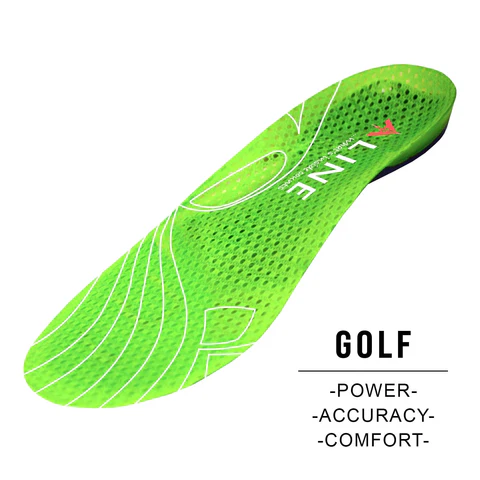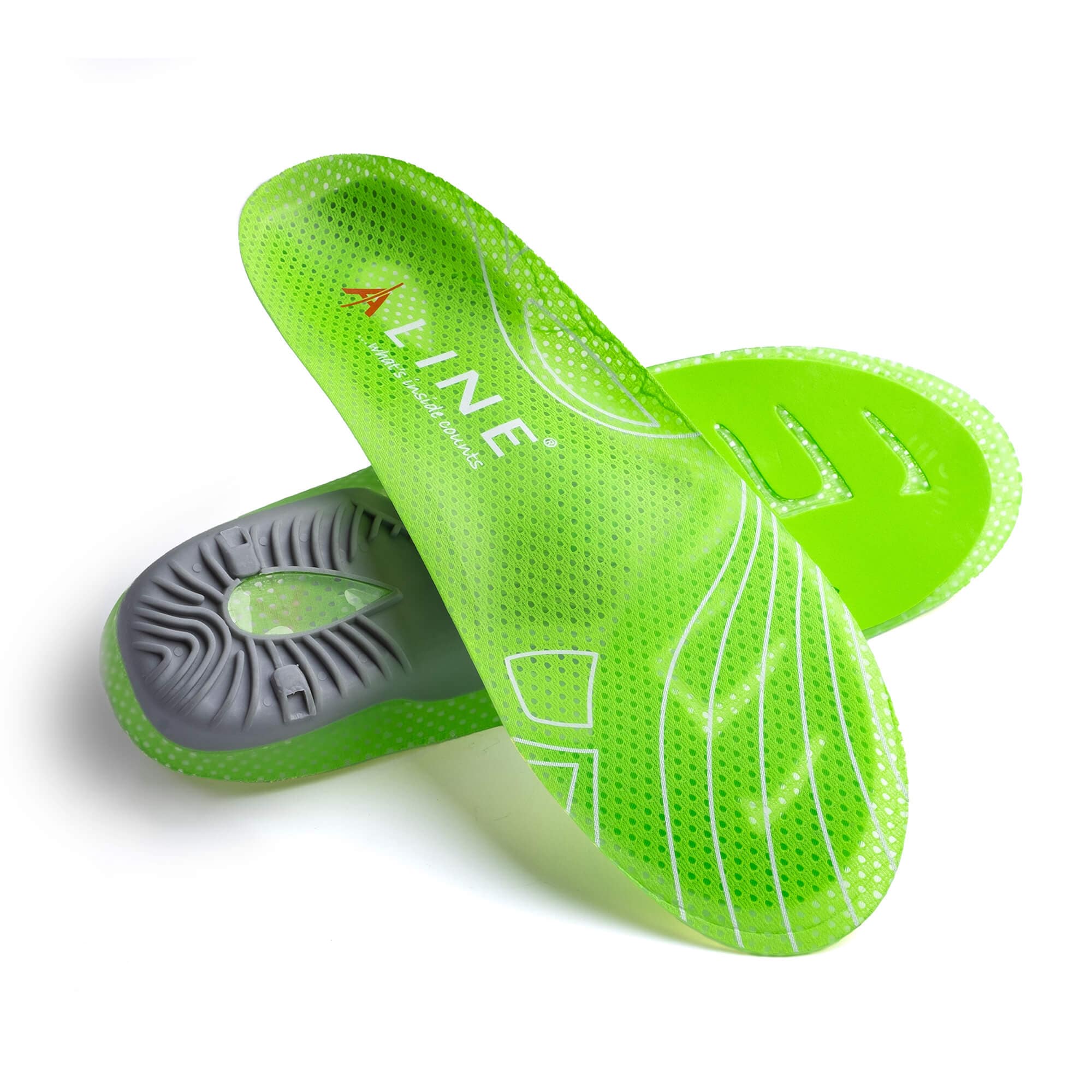Plantar fasciitis is a common condition that causes pain in the heel and bottom of the foot, often making walking and standing uncomfortable. Insoles are an effective solution to alleviate the pain, with various types available. Two common types are gel and foam insoles. This article explores the usage forms of these insoles for plantar fasciitis and compares their benefits, helping you make an informed decision about which option is right for you.
Understanding Plantar Fasciitis
Plantar fasciitis occurs when the tissue that connects the heel to the toes becomes inflamed. This condition often results from excessive pressure or strain on the feet, especially during activities that involve prolonged standing or walking. The pain typically occurs near the heel and can be sharp or dull, making it difficult to move around. Insoles provide support and cushioning to reduce strain and promote healing, with gel and foam being popular choices for managing the symptoms of plantar fasciitis.
The Role of Insoles in Plantar Fasciitis Treatment
Insoles for plantar fasciitis are designed to provide cushioning and support to the feet. They help distribute weight evenly, reducing pressure on the affected areas, especially the arch and heel. By offering additional shock absorption, insoles can relieve pain and prevent further damage to the tissues. Gel and foam insoles are effective in different ways and offer distinct benefits. The right type of insole can make a significant difference in managing and treating plantar fasciitis symptoms.

Gel Insoles: Overview
Gel insoles are made from a soft, elastic material that provides excellent cushioning. These insoles are designed to absorb shock and reduce the impact on the feet, making them particularly useful for those with plantar fasciitis. The gel material conforms to the shape of the foot, providing customized support to the arch and heel. Gel insoles are often preferred for their comfort and ability to reduce foot fatigue. They are also known for their durability, maintaining their shape over time.
Benefits of Gel Insoles for Plantar Fasciitis
Gel insoles offer several benefits for individuals suffering from plantar fasciitis. First and foremost, they provide superior cushioning, which helps absorb the shock that can exacerbate pain in the heel and arch. The soft gel material also offers targeted support to the most affected areas, promoting healing. Gel insoles are also known for being lightweight and flexible, making them a comfortable option for daily use. Additionally, their moisture-wicking properties help keep feet dry and reduce the risk of irritation.
Foam Insoles: Overview
Foam insoles are typically made from a soft, lightweight foam material that provides a different type of support compared to gel insoles. These insoles offer firm yet comfortable cushioning, providing stability to the foot. Foam insoles are known for their ability to contour to the shape of the foot, ensuring a snug fit. While foam may not provide the same level of shock absorption as gel, it offers a more supportive base that can help with alignment, reducing the strain on the plantar fascia.
Benefits of Foam Insoles for Plantar Fasciitis
Foam insoles offer unique advantages for people with plantar fasciitis. One of the key benefits is their firm support, which helps stabilize the foot and prevent excessive pronation. This alignment support can alleviate strain on the plantar fascia and reduce pain. Foam insoles are also typically more affordable than gel options, making them an accessible choice for those looking for effective relief on a budget. The material’s ability to adapt to foot contours provides customized comfort, helping to reduce overall foot fatigue.
Key Differences: Gel vs. Foam Insoles
The main difference between gel and foam insoles lies in their composition and support features. Gel insoles are primarily designed for cushioning and shock absorption, making them ideal for reducing impact and easing pain in the heel and arch. Foam insoles, on the other hand, offer more stable support and are better suited for alignment and reducing pressure. While gel insoles are more comfortable for those seeking soft cushioning, foam insoles are preferred by individuals who need firm support and stability. The choice depends on personal preferences and specific needs.

Which Insole is Better for Active Lifestyles?
For individuals who engage in high-impact activities or sports, gel insoles tend to be the preferred option due to their excellent shock-absorbing properties. The cushioning provided by gel insoles helps reduce the impact on the feet during activities like running or walking, which can aggravate plantar fasciitis. However, for people who have a more sedentary lifestyle or spend long hours on their feet, foam insoles may offer better support for alignment and prevent the strain caused by prolonged standing or walking.
Comfort and Durability Considerations
When it comes to comfort, gel insoles are often the go-to choice due to their soft, cushioned feel. The gel material conforms to the foot’s shape, offering a personalized fit that enhances comfort. Foam insoles, while firm, provide stability that can be beneficial for alignment. In terms of durability, both gel and foam insoles have their strengths. Gel insoles are typically more long-lasting, retaining their shape and cushioning over time. Foam insoles, though slightly less durable, can still provide significant relief with regular use.
Cost Comparison: Gel vs. Foam Insoles
Cost is an important factor when choosing between gel and foam insoles. Gel insoles tend to be more expensive due to the advanced materials and technology used in their construction. However, their long-lasting nature and superior cushioning may make them a worthwhile investment for those with chronic foot pain. Foam insoles are generally more affordable, offering effective relief at a lower price point. They may require more frequent replacement, but they remain a cost-effective choice for those seeking immediate relief without a large upfront investment.
Conclusion: Choosing the Right Insole for Your Needs
Both gel and foam insoles can be effective for managing plantar fasciitis, but the choice depends on individual needs and preferences. Gel insoles are ideal for those seeking cushioning and shock absorption, while foam insoles offer more support and stability. It’s essential to consider comfort, activity level, and durability when making a decision. For individuals who spend long hours on their feet or require additional support, considering options like work boot orthotics may provide even more specialized relief and comfort.
FAQs
How long do gel insoles last?
Gel insoles are generally durable and can last for several months to a year, depending on usage. Regular wear may affect the cushioning, so it’s important to monitor for signs of wear and replace them as needed.
Can foam insoles help with severe plantar fasciitis pain?
Foam insoles can provide support and relieve mild to moderate plantar fasciitis pain. However, for severe pain, additional treatments like physical therapy or custom orthotics may be necessary.
Are gel or foam insoles better for walking long distances?
Gel insoles are often better suited for long-distance walking as they provide extra cushioning and shock absorption, helping to reduce fatigue and discomfort. Foam insoles, while supportive, may not offer the same level of comfort for extended periods.




